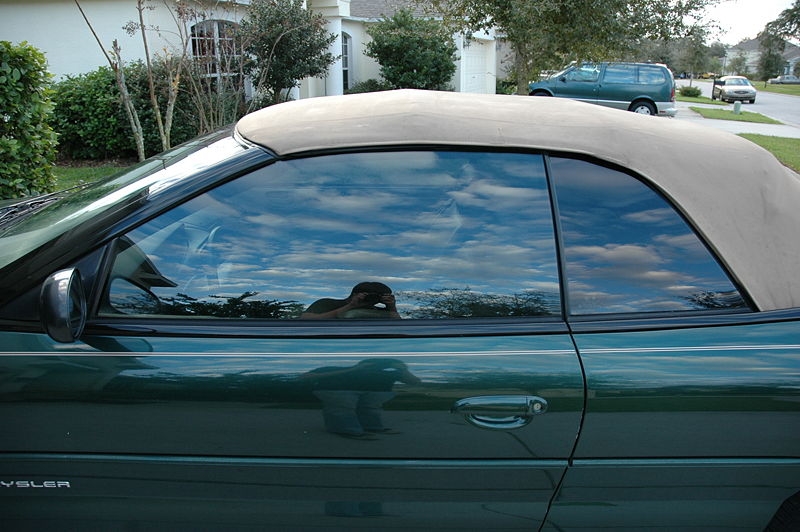
Window tinting is a common practice to give cars a custom look. However, most states regulate the amount of tint that can be applied to a car's windows. These regulations vary from state to state and are often difficult to understand. Knowing your local tinting regulations is important to help avoid tickets and ensure a car will pass a safety inspection.
Window tint is measured in terms of visible light transmission, or VLT. VLT represents the percentage of light allowed to pass through the tinted window; the lower the VLT, the darker the window. Window tint, whether offered as a spray-on coating or an adhesive film, is sold with a VLT rating that falls into one of several categories: dark (20 VLT), medium (35 VLT) and light (50 VLT). Some brands of window tint are also available with a "limo" rating (5 VLT), which may be intended only for use on specialty applications and not passenger vehicles.
In regulating VLT under law, most states specify a minimum VLT for the front side windows, another for the rear side windows and another VLT for the vehicle's rear window. Windshields are usually required to be left at factory specifications that may actually include a mild tint or partial shading to reduce glare.
Although state laws regulating VLT limits are constantly changing, certain states have become known for their strict restriction of window tinting. New York State is among them. In New York, drivers may shade their rear window to any darkness, but all of a vehicle's side windows must allow 70 percent of the visible light to pass through. California law is similar, but requires only that a car's front windows be kept light with rear side windows left unregulated.
In Pennsylvania and Rhode Island, laws are even more stringent, requiring all of a vehicle's windows to be shaded no darker than 70 VLT. Other states with generally low amounts of tinting allowed include Maine, New Hampshire, Alaska and Delaware.
Most states allow a moderate amount of window tinting that is seen to fall within limits that allow for driver safety. These states may allow tinting in the "medium" range (35 VLT) on some or all of a vehicle's windows. States such as West Virginia, Missouri, Kansas, Tennessee, North Carolina, and Washington allow for 35 VLT on all windows other than the windshield. In Alabama, that amount is reduced to 32 VLT.
Similar laws exist in states such as South Carolina, Idaho, Kentucky, Nebraska and South Dakota where medium-range VLTs are allowed but may vary for the different windows on a vehicle. In these particular states, a vehicle's windows may be tinted anywhere from 20 VLT to 35 VLT depending on the location of the window.
Some states have laws to regulate window tinting, but still allow for a rather dark tint. Oftentimes, these are states where sunlight is intense and frequent, thus making the desire for tinted windows greater to help keep cars cooler on hot days and to reduce dangerous glare in a variety of conditions. Florida is among the states with the least regulation, specifying only a 28 VLT on front side windows and a 15 VLT elsewhere. New Mexico requires 20 VLT on all windows.
In some states, the allowable VLT is different for front side windows where a driver views the road around them, but dark tint is allowed on rear side and back windows. In Illinois, for example, no tinting of any kind is allowed on front side windows, but the rear windows can be tinted to any level of darkness. The same is true of Vermont and in certain parts of Colorado.
Just as window tint regulations vary widely from state to state, the enforcement of such laws is handled differently as well. In some states, window tint is measured with an optical meter during routine safety inspections and cars with too much tint are denied safety certification. In other situations, it can be difficult to tell whether a vehicle's windows are in compliance. This is especially true when different methods of tinting are combined, such as applying tinted film on top of windows treated with spray-on coatings.
One of the issues surrounding window tinting involves police officers being able to identify a vehicle's driver through the front window. This is the reason behind states that allow no tint on front windows, but do permit tinting elsewhere. In some cases, drivers are cited for too much tint on their windows after being stopped for another common reason, such as speeding.